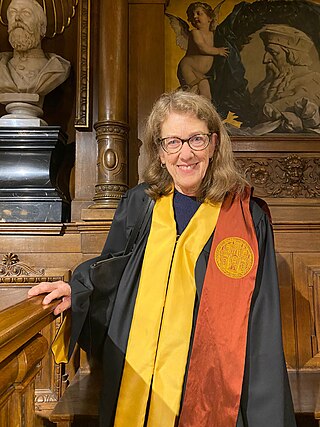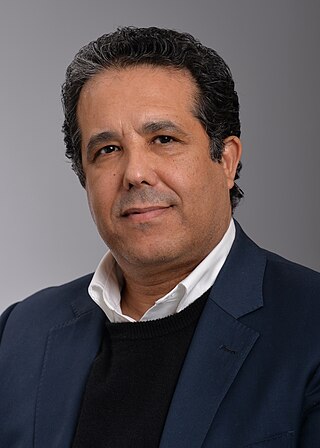
Particle physics or high-energy physics is the study of fundamental particles and forces that constitute matter and radiation. The field also studies combinations of elementary particles up to the scale of protons and neutrons, while the study of combination of protons and neutrons is called nuclear physics.

High-energy nuclear physics studies the behavior of nuclear matter in energy regimes typical of high-energy physics. The primary focus of this field is the study of heavy-ion collisions, as compared to lighter atoms in other particle accelerators. At sufficient collision energies, these types of collisions are theorized to produce the quark–gluon plasma. In peripheral nuclear collisions at high energies one expects to obtain information on the electromagnetic production of leptons and mesons that are not accessible in electron–positron colliders due to their much smaller luminosities.
Leptoquarks are hypothetical particles that would interact with quarks and leptons. Leptoquarks are color-triplet bosons that carry both lepton and baryon numbers. Their other quantum numbers, like spin, (fractional) electric charge and weak isospin vary among models. Leptoquarks are encountered in various extensions of the Standard Model, such as technicolor theories, theories of quark–lepton unification (e.g., Pati–Salam model), or GUTs based on SU(5), SO(10), E6, etc. Leptoquarks are currently searched for in experiments ATLAS and CMS at the Large Hadron Collider in CERN.

Kenneth Douglas Lane is an American theoretical particle physicist and professor of physics at Boston University. Lane is best known for his role in the development of extended technicolor models of physics beyond the Standard Model.

The lambda baryons (Λ) are a family of subatomic hadron particles containing one up quark, one down quark, and a third quark from a higher flavour generation, in a combination where the quantum wave function changes sign upon the flavour of any two quarks being swapped. They are thus baryons, with total isospin of 0, and have either neutral electric charge or the elementary charge +1.

Chris Quigg is an American theoretical physicist at the Fermi National Accelerator Laboratory (Fermilab). He graduated from Yale University in 1966 and received his Ph.D. in 1970 under the tutelage of J. D. Jackson at the University of California, Berkeley. He has been an associate professor at the Institute for Theoretical Physics, State University of New York, Stony Brook, and was head of the Theoretical Physics Department at Fermilab from 1977 to 1987.
Estia Joseph Eichten, is an American theoretical physicist, of the Fermi National Accelerator Laboratory (Fermilab). He received his Ph.D. in 1972 from the MIT Center for Theoretical Physics, where he was a student of Roman Jackiw's, and was associate professor of physics at Harvard before joining the Fermilab Theoretical Physics Department in 1982.

Richard Keith Ellis, is a British theoretical physicist, working at the University of Durham, and a leading authority on perturbative quantum chromodynamics and collider phenomenology.

Mary Katharine Gaillard is an American theoretical physicist. Her focus is on particle physics. She is a professor of the graduate school at the University of California, Berkeley, a member of the Berkeley Center for Theoretical Physics, and visiting scientist at the Lawrence Berkeley National Laboratory. She was Berkeley's first tenured female physicist.
Stanley J. Brodsky is an American theoretical physicist and emeritus professor in the SLAC Theory Group at the SLAC National Accelerator Laboratory at Stanford University.
Alfred H. Mueller is an American theoretical physicist, and the Enrico Fermi Professor of Physics at Columbia University.

Guido Tonelli is an Italian particle physicist who was involved with the discovery of the Higgs boson at the Large Hadron Collider. He is a professor of General Physics at the University of Pisa (Italy) and a CERN visiting scientist.

Peter Jenni, is an experimental particle physicist working at CERN. He is best known as one of the "founding fathers" of the ATLAS experiment at the CERN Large Hadron Collider together with a few other colleagues. He acted as spokesperson of the ATLAS Collaboration until 2009. ATLAS is a world-wide collaboration which started in 1992 involving roughly 3,000 physicists at 183 institutions in 38 countries. Jenni was directly involved in the experimental work leading to the discoveries of the W and Z bosons in the 1980s and the Higgs boson in 2012. He is (co-)author of about 1000 publications in scientific journals.

The Future Circular Collider (FCC) is a proposed particle accelerator with an energy significantly above that of previous circular colliders, such as the Super Proton Synchrotron, the Tevatron, and the Large Hadron Collider (LHC). The FCC project is considering three scenarios for collision types: FCC-hh, for hadron-hadron collisions, including proton-proton and heavy ion collisions, FCC-ee, for electron-positron collisions, and FCC-eh, for electron-hadron collisions.
Bryan Ronald Webber, FRS, FInstP is a British physicist and academic. He was a Fellow of Emmanuel College, Cambridge from 1973 to 2010, and Professor of Theoretical Physics at the University of Cambridge from 1999 to 2010. He has been awarded the Dirac Medal by the Institute of Physics, the Sakurai Prize by the American Physical Society and the High Energy and Particle Physics Prize by the European Physical Society.

James E. Brau is an American physicist at the University of Oregon (UO) who conducts research on elementary particles and fields. He founded the Oregon experimental high energy physics group in 1988 and served as director of the UO Center for High Energy Physics from 1997 to 2016. Prior to joining the Oregon faculty, he served in the Air Force and held positions at the Stanford Linear Accelerator Center and the University of Tennessee. He is a fellow of both the American Physical Society and also the American Association for the Advancement of Science. In 2006 he was appointed the Philip H. Knight Professor of Natural Science, an endowed professorship.

Sally Dawson is an American physicist who deals with theoretical elementary particle physics.
George H. Trilling was a Polish-born American particle physicist. He was co-discoverer of the J/ψ meson which evinced the existence of the charm quark. Trilling joined the Physics Department faculty at the University of California, Berkeley, in 1960, where he was Department Chair from 1968 through 1972. Trilling was on sabbatical leave to CERN in 1973–74, where he worked on the study of the properties of charm particles, their decay modes and excited states. He was also Director of the Physics Division at the Lawrence Berkeley National Laboratory from 1984 until 1987. Trilling was a principal proponent of the Superconducting Super Collider project and spokesperson for the Solenoidal Detector Collaboration. After the SSC was cancelled in 1993, Trilling transitioned most of the SDC team to collaborate on the ATLAS experiment at the LHC, which led to the discovery of the Higgs boson in 2012. Trilling was elected Vice-President of the American Physical Society, beginning his term on 1 January 1999, and was President of the society in 2001.

Kamal Benslama is a Moroccan-Swiss experimental particle physicist. He is a professor of physics at Drew University, a visiting experimental scientist at Fermilab, and a guest scientist at Brookhaven National Laboratory. He worked on the ATLAS experiment, at the Large Hadron Collider (LHC) at CERN in Switzerland, which is considered the largest experiment in the history of physical science. At present, he is member of the MU2E collaboration at Fermi National Accelerator Laboratory (Fermilab), located just outside Batavia, Illinois, near Chicago. Fermilab is a United States Department of Energy national laboratory specializing in high-energy particle physics.
The SLAC Theory Group is the hub of theoretical particle physics research at the SLAC National Accelerator Laboratory at Stanford University. It is a subdivision of the Elementary Particle Physics (EPP) Division at SLAC.











